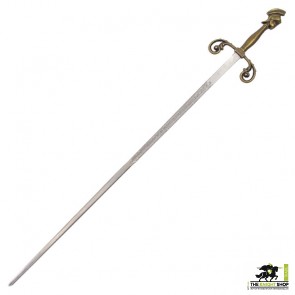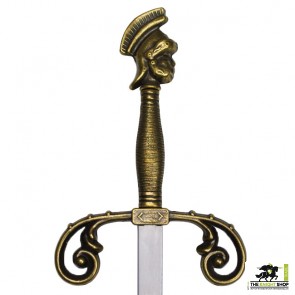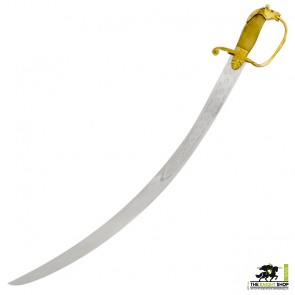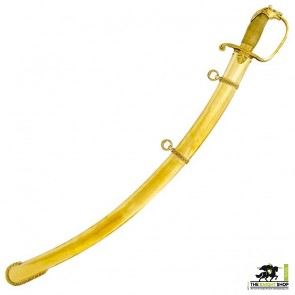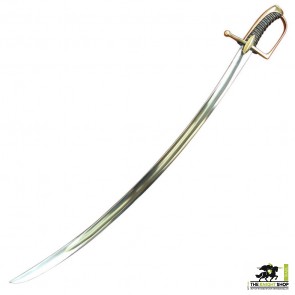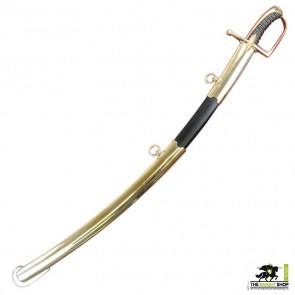Napoleonic Swords
-
Italian Smallsword - 19th Century
A sword of this type belonged to Ferdinand I, King of the Two Sicilies. The blade is made of steel with two edges and a hexagonal section tip. This is a light one-handed sword designed for thrusting which evolved out of the longer and heavier rapier of the late Renaissance.
Learn More
The height of the small sword's popularity was between the mid 17th and late 18th century, when any man, civilian or military, with pretensions to gentlemanly status would have worn a small sword on a daily basis.
Total Length: 106 cm
Weight: 957 g
Blade: Stainless Steel
Edge: Unsharpened
Scabbard: None
All dimensions are approximate and may vary from piece to piece. -
British Officer’s Horse Head Sword - 18th Century
The British Infantry Officer did not carry a regulation infanty sword until 1786. Before this officers were responsible for choosing their own swords. Whilst swords with Lion Head pommels were a popular choice, a little rarer were those with horse head pommels, perhaps alluding to the White Horse of Hannover of the Georgian monarchs.
Learn More
Our British Officer’s Horse Head Sword features and a tempered AISI 1065 high carbon steel blade with etched decoration. The ornate brass hilt features a wood grip that is wrapped with brass wire. The scabbard is made from brass and features two fixed hanging rings.
Total length: 84.5cm
Blade length: 72cm
Grip length: 9cm
Weight: 1114g
Blade thickness (base): 0.6cm
Blade width (base): 3.7 cm
Point of Balance (PoB): 18 cm
Blade: AISI 1065 High Carbon Steel
Edge: Blunt
Pommel: Nut
Scabbard: Brass
All dimensions are approximate and may vary from piece to piece. -
Napoleonic French Hussar Saber
Adept scouts and light cavalrymen, Napoleons Hussars could be counted upon to fight with speed and severity wherever they were deployed. Their attitude and fighting style derived from the original Hussars of Hungary and Poland in centuries past who perfected light cavalry tactics in their conflicts with the Turks. Their successes inspired a type of light cavalryman who could be seen in many European armies by the Napoleonic era, all following a rough outline of Hungarian-inspired dress, large moustaches, cavalier demeanor and arms.
Learn More
Understandably, the public romanticized the dashing, exotic image of the charging Hussar. This French Hussar saber is similar to other Hussar and cavalry sabers of the period who share a common ancestor in the Polish-Hungarian Szabla. After centuries of mounted warfare, the Szabla became the Hussar saber, ideally evolved for light cavalry combat. Its characteristic curve allowed for deathly sweeping slashes from on high. Its design highly influenced the British 1796 Light Cavalry Saber – a design destined to spread throughout the continent and to the United States.
Overall Length: 100cm
Blade Length: 84cm
Grip Length: 11cm
Weight: 975g
Edge: Blunt
Width: 32.8mm
Thickness: 7.4 - 4.2mm
Pommel: Peened
POB: 20.3cm
Blade: EN9 High Carbon Steel
Scabbard: Leather, Steel
All dimensions are approximate and may vary from piece to piece.




